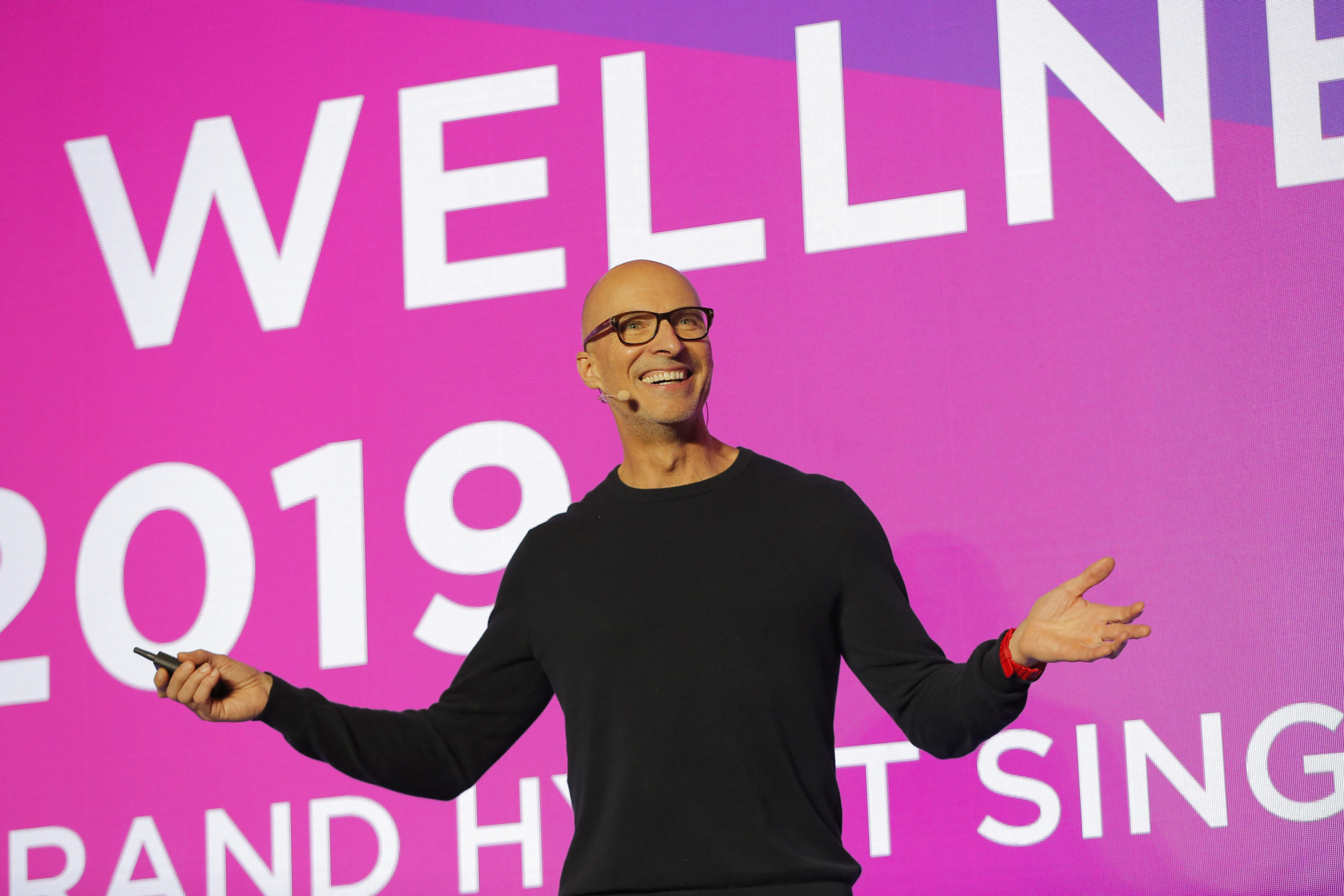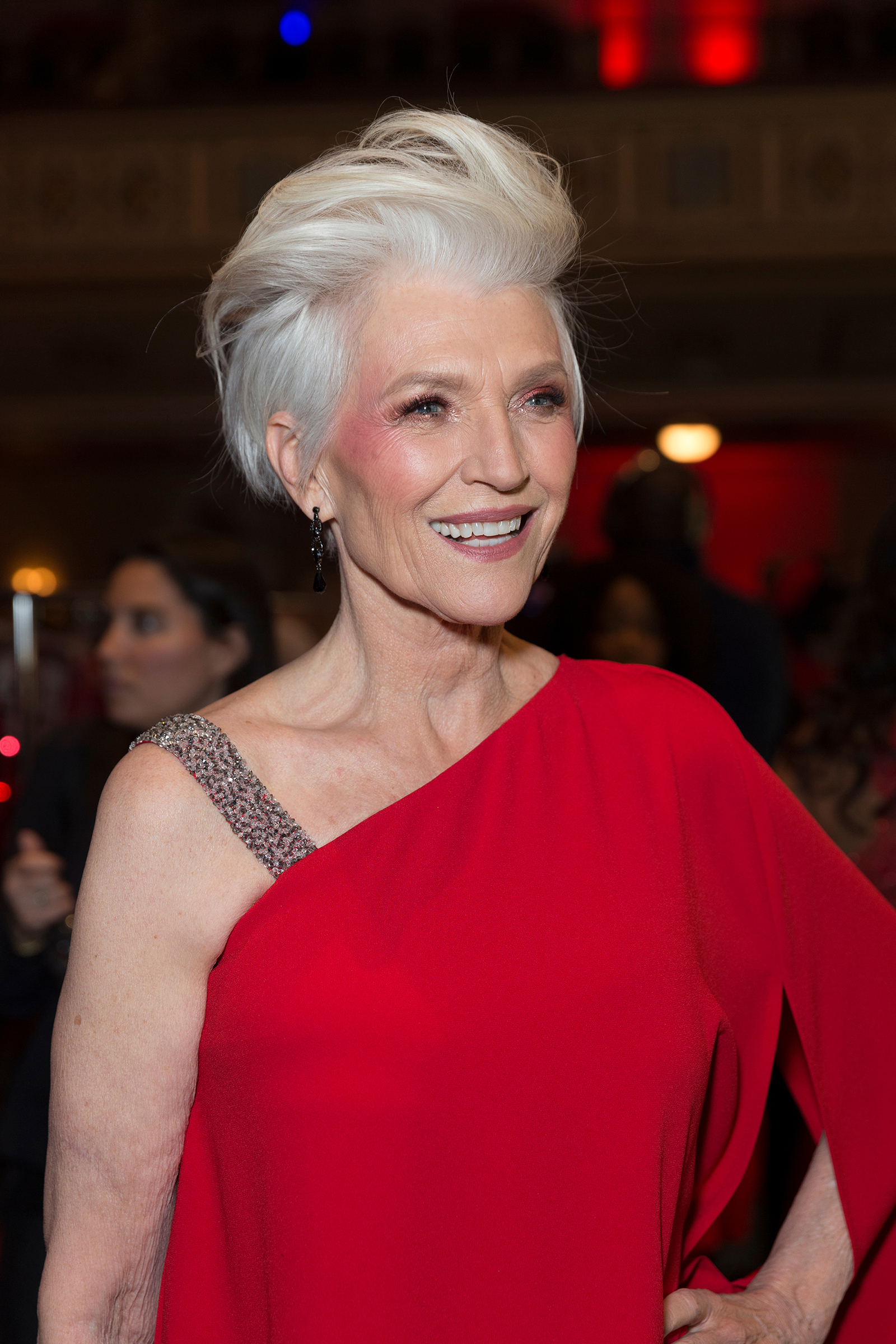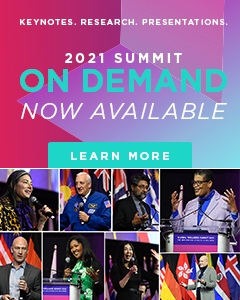Aging Rebranded: Positively Cool
They’re active, vibrant, more engaged than ever (and 60+!). It’s a powerful demographic with major marketing potential— and industries across all platforms are noticing.
By Rina Raphael
The 60+ generation is aging radically different than previous generations. Today’s retirees start businesses, run marathons and travel widely. With increased longevity and substantial wealth, they put a premium on health, wellness and nutrition. And yet this powerful demographic attracts only 10 percent of marketing budgets and less than one percent of global innovation. That’s changing, as multiple industries target seniors with product design, experiences and campaigns that speak to their strengths and sensibility.
Perceptions have changed since the “I’ve fallen, and I can’t get up!” commercials of the late 1980s. No longer are baby boomers treated like feeble victims by way of fear-based messaging (or worse, simply ignored). Numerous legacy brands and start-ups realize this is an active, vivacious and connected group deserving of the same empowering, aspirational attention lauded on younger consumers.
It certainly makes financial sense: In countries such as the US and Japan, boomers control the highest percentage of disposable income. The “silver economy” has brands racing to appeal to older demographics—as well as the ones to come. The World Health Organization (WHO) predicts the 60+ population will nearly double by 2050 from 12 percent to 22 percent.
“Four years ago, nobody would take our call. They fled from us,” recalls David Harry Stewart, CEO and founder of Ageist, a Los Angeles-based media company and consulting firm specializing in older markets. “[Our age group] was what they didn’t want. But now, it’s quite the opposite. These companies are noticing these people are really cool.”

Ageist works with start-ups and multinational conglomerates eager to capitalize on the sunset years. Many incorporate senior feedback to create aesthetically driven products created with thoughtfulness, practicality and, more importantly, respect. This spans multiple categories, including fitness, food, tech, beauty, travel and transportation. Boomers, reports Nielsen[1], account for approximately $230 billion in sales in the US consumer-packaged goods category.
In Japan, for example, legacy cosmetics brand Shiseido launched PRIOR, a brand catering solely to mature women. Its campaign stressed the beauty in aging and accommodated its audience with larger fonts and simple instructions. Likewise, Pause Well-Aging is a US beauty line specifically developed for menopausal skin concerns.
The majority of innovations center around health since older populations have a higher percentage of medical concerns. Still, these issues are treated sensitively, free of any condescension or indignity. New York-based Willow sells underwear for the 400 million people worldwide with incontinence. Unlike its bulky diaper-like predecessors, the collection comes in functional, sleek designs that echo the style of trendy fashion labels.
Seattle telemedicine start-up Gennev encompasses an online community for middle-aged women going through menopause. It also sells discreetly labeled products that, as Gennev CEO Jill Angelo explains, adult women would want to display on their bathroom shelf.

“We’re seeing more and more companies go after this audience because they’re underserved,” says Angelo. “They’ve got spending power, but they want products that come from places they can identify with, that are authentic to them.”
The tech industry sees a multitude of products addressing adult health concerns from a meaningful, practical standpoint. Virtual reality games improve seniors’ cognitive function; home diagnostic kits allow for easy health monitoring, while a host of robotic assistants tackle the loneliness epidemic.
ElliQ is an elegant digital companion helping older individuals live independently longer. Created by Israel’s Intuition Robotics, the faceless robot radically differs from overly cutesy devices. It’s not meant to infantilize its user, says Co-Founder Dor Skuler; it’s there to respectfully assist without serving as an emotional crutch. Such AI-assisted technology will rapidly grow as healthcare further transitions from the hospital to one’s home.
Some entrepreneurs look to wholly reinvent categories. Perennial is a plant-based adult nutrition beverage taking on industry stalwarts such as Ensure and Boost. The product’s promotional campaign features buff senior citizens running on a beach with the tagline, “longevity tastes good.”
Millennials and baby boomers increasingly mirror one another in adopting healthy lifestyle habits, and yet the latter are often left out by the food and beverage sector. A recent study found that boomers are more likely than any other generation to choose nutritious foods.
“People are aging so much better than in prior generations,” notes Perennial CoFounder Sara Bonham. “We wanted to create a product that empowered them, not just for a need-state, but something that they want.”
The fitness industry is another industry seeing a demographic shift. Boomers compete alongside millennials for most active generation, with many retirees opting for at-home fitness equipment models such as Peloton or upscale boutique gyms. According to The International Health, Racquet & Sports Club Association[2], those aged 55 and up compose nearly a quarter of all US health club members. They are now the fastest-growing membership group and show the highest rate of frequent attendance.
“The real spend behind all of [fitness club growth] is going to come from the boomer market,” notes health club industry analyst Bryan O’Rourke, founder and CEO of Vedere Ventures. “It’s all based on people getting older and wanting to have a better quality of life.”
Ken Smith, director of the Mobility Division at the Stanford Center on Longevity, predicts more conglomerates such as Procter & Gamble will invest resources in the senior market, rapidly onboarding consultant firms and partnering with testing groups. In the near future, expect a stronger focus on the personalized wellness space with more prevention and management solutions for chronic illnesses such as diabetes or heart disease.
“There isn’t a good embedded sense of the capability of older people,” says Smith. “Big companies are just starting to figure it out. They are still going to progress a lot over the next few years.”
Brands still struggle with how to appeal to a diverse and often fractured 50+ demographic. Many lump whole age ranges into one uniform monoculture, assuming they all possess identical concerns and desires. But people don’t age equally. “The more people age, the greater the divergence,” says Stewart, noting the breadth of psychographics. “People see this gigantic demographic with these huge numbers and think they can capture this entire market. You need to pick a lane.”

With a 19-year age range, it’s naive to assume boomers constitute a cohesive group. And often, they’re subject to common misconceptions: They do not all fumble with technology, spend their days golfing or desire to retire in Florida. In fact, a recent survey found that boomers spend nearly five hours[3] a day on smartphones and spend more[4] on online shopping than millennials. An increasing number move into hip condos in downtown urban areas, paving the way for new retirement housing projects within walking distance to cultural and foodie destinations.
Some companies and marketers get it right. Covergirl added Maye Musk, 71, as one of its spokesmodels. Cult fashion brand Rachel Comey regularly features silver-haired models in its campaigns. Meanwhile, brands such as Nike[5], JCPenney and Williams-Sonoma partner with over-50 social media influencers, who prove more approachable than their jet-setting Kardashian peers.
“More people are living longer and healthier,” says Stewart. “This is where the market is shifting to. You can’t ignore it.”
THOUGHT STARTER
Age-friendly cities
Along with the private sector, how can cities, local governments and urban planners better design for seniors’ health needs? Globally, 57 percent of people 60+ reside in towns and cities. From sidewalks to transportation, they depend on an accessible environment to better interact with their neighbors and local services.
In 2010, the WHO launched the Global Network for Age-Friendly Cities to help communities and organizations across the globe share ideas. Some of the ideas are smart, yet remarkably simple, to implement: In the UK, Manchester’s city hall holds “Older People’s Forums” for senior citizens to voice complaints and suggest fixes. And Ottawa, Canada, added hundreds of outdoor benches and modified fitness equipment to encourage their elders to stay active.
ENDNOTES
[1]Introducing Boomers: Marketing’s Most Valuable Generation by Nielsen and BoomAgers, 2012.
[2]The 2018 IHRSA Health Club Consumer Report by the International Health, Racquet & Sports Club Association.
[3] Forget Generational Stereotypes, Baby Boomers Are Just as Addicted to Smart Phones as Millennials by Nicole Fisher, Forbes, 6 May 2019.
[4] The Online Shopping Habits of Today’s Baby Boomers, SKUlocal, 12 November 2018.
[5] Are Baby Boomers the Next Kardashians? by Guy Avigdor, Forbes, 7 May 2019.
Copyright © 2019-2020 by Global Wellness Summit.
If you cite ideas and information in this report please credit “2020 Wellness Trends, from the Global Wellness Summit”.
For more information, email [email protected].


